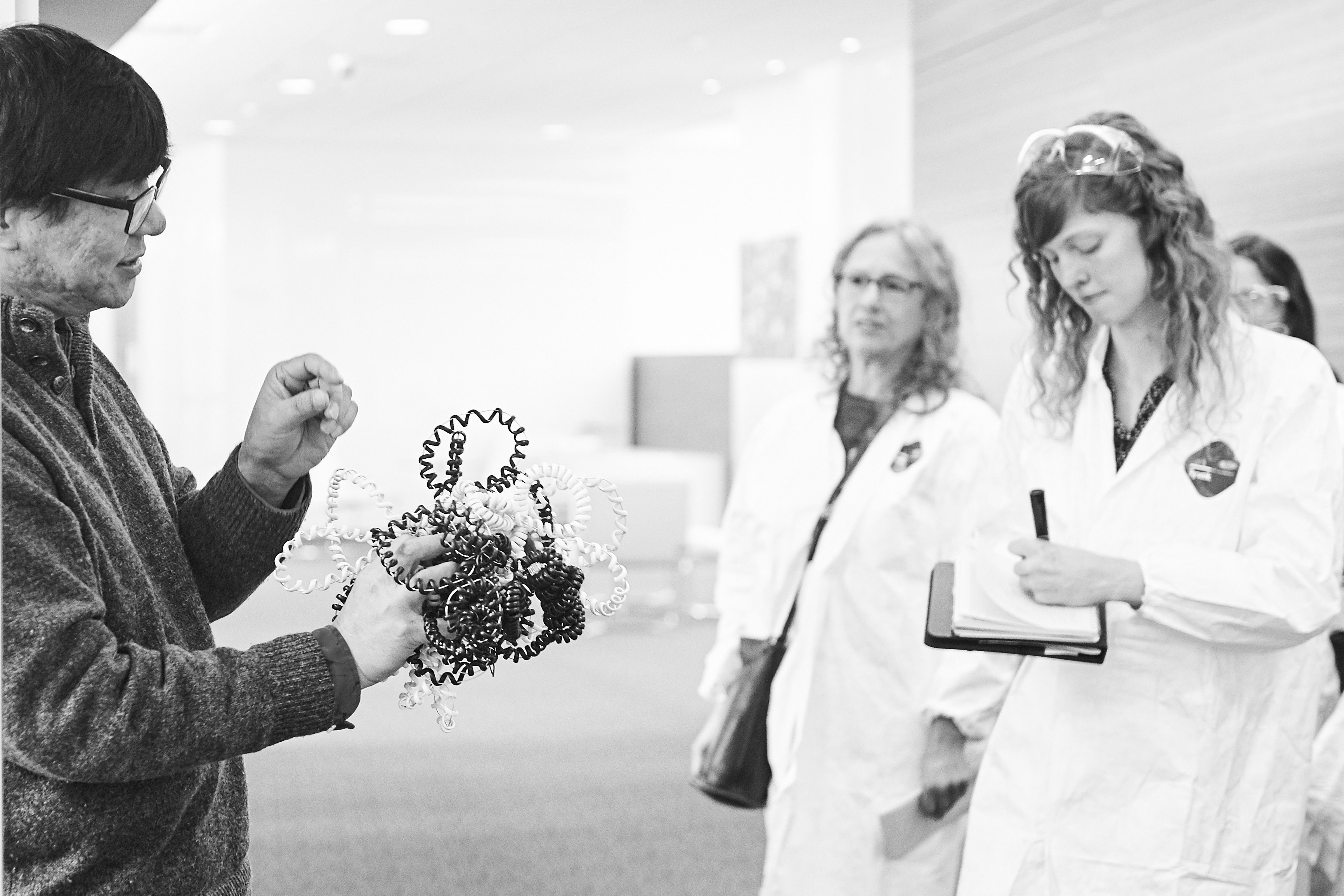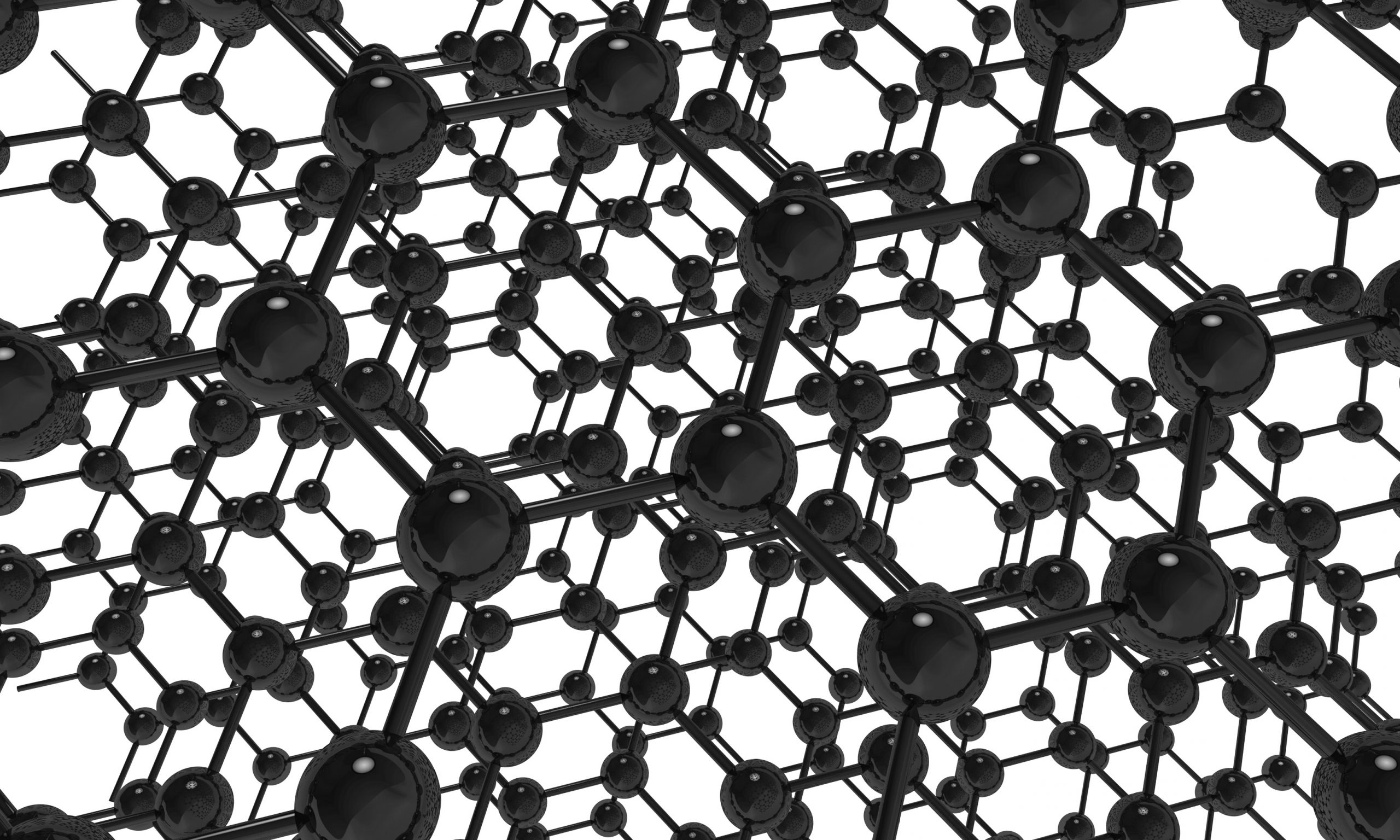When Gov. Dannel Malloy, University President Susan Herbst, and The Jackson Laboratory CEO Edison Liu persuaded the state that bringing The Jackson Laboratory for Genomic Medicine to the UConn Health campus would yield dividends for bioscience in Connecticut, even they had no idea how fast that would come true. Barely two years after the facility opened, there are already 19 faculty at The Jackson Lab facility in Farmington, and the majority of them are collaborating with UConn physicians and researchers.
Real, impactful science is teamwork. — Charles Lee
The governor may have sold the idea of helping JAX Genomic Medicine come to Connecticut to the legislature on the basis of jobs. But this was no marriage of chance or economic convenience. JAX has a deep knowledge of the role of genetics in diseases of mice and of humans, and wanted a more direct way to translate that into medical treatments. UConn has broad expertise in the genetics of everything from microbes to livestock, plus a hospital with patients and clinician-researchers. Together, UConn and JAX could create an ideal ecosystem of collaboration between doctors, geneticists, and computational biologists that might yield cures for human disease.
“Real, impactful science is teamwork,” says Charles Lee, director of JAX Genomic Medicine in Farmington. By locating on the UConn Health campus, JAX researchers can team up with fantastic clinicians and researchers at UConn, he adds.
And UConn appreciates the partnership just as much, because of the talent JAX brings, as well as the great equipment and facilities. According to UConn vice president of research Jeff Seemann, an internationally recognized biochemist, the state-of-the-art UConn-JAX complex is the type of setting scientific researchers “dream about. It’s where any scientist could come, have a long and productive career, and die happy.”
Here are a few of the research collaborations that have developed over the first two years of the UConn-JAX partnership.
Stormy and Yijun’s Twisted Genome
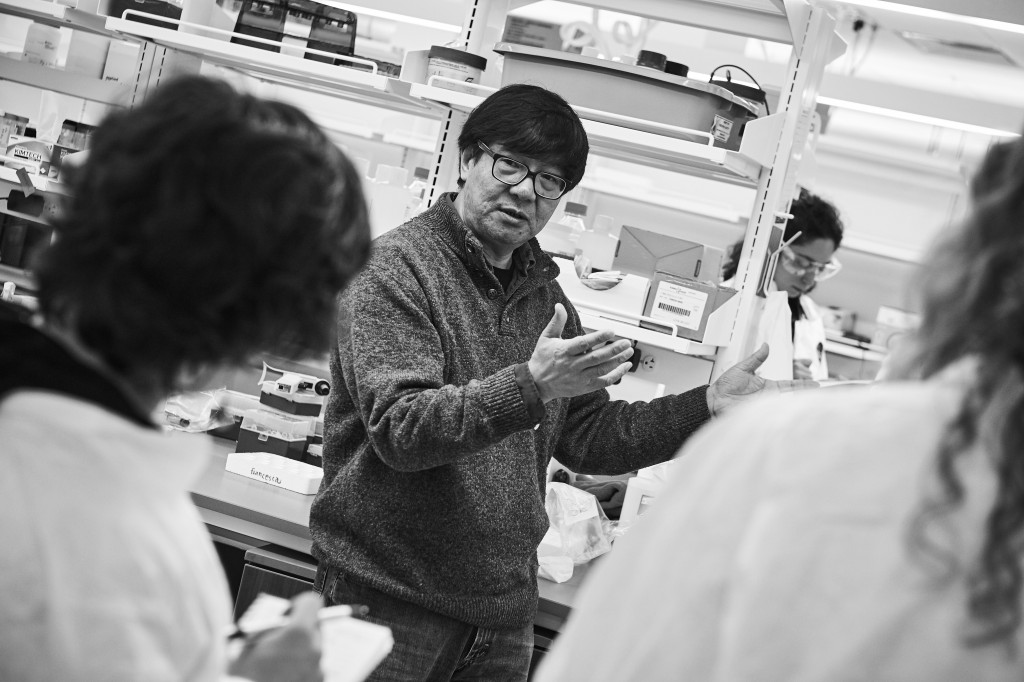
Yijun Ruan is holding a genome. To the casual observer it looks like a misguided sculptor had a field day with a bunch of old telephone cords. But these old cords expose a deep truth about our DNA: you can’t read it linearly, like a book. Each loop of telephone cord represents a loop of DNA. Some loops stretch far away, not touching anything else. Other pieces bunch up in chokepoints (which look suspiciously like purple hair ties in Ruan’s model).
“The three-dimensional structure is not just there to look pretty. It’s also part of the regulatory framework,” says Ruan, a molecular biologist and the Florine Deschenes Roux chair and director of genome sciences at The Jackson Laboratory. What he means is that your genetic code doesn’t function when it’s stretched out like a straight line. When it’s at work in your cells, the twists and loops in your DNA bring genes and other bits close together that would otherwise be far removed. When they are close together, they can interact, changing and regulating each other’s functions. A mutation or deletion of a piece of DNA in one of the isolated loops may have no obvious effects, while deleted DNA in one of the chokepoints might cause a cascade of changes, leading to obvious disease.
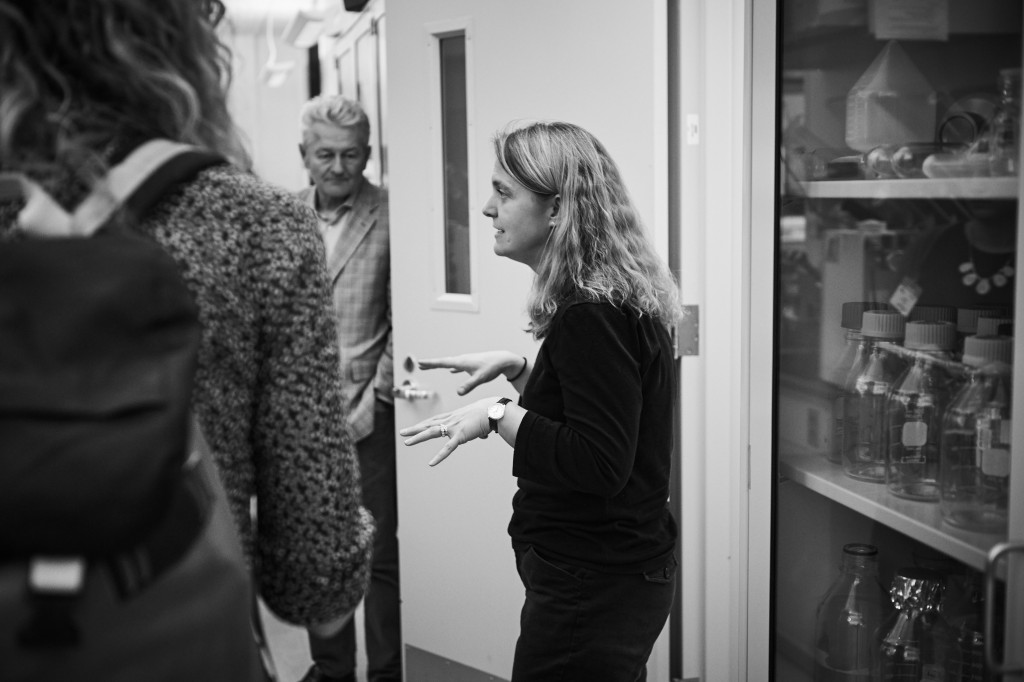
Ruan has teamed up with UConn Health developmental biologist Stormy Chamberlain to get a better understanding of the shape of one specific area in the genome that could be a chokepoint. Ruan and Chamberlain will map it and look at the interactions on human chromosome 15, in a region related to Angelman, Prader-Willi, and 15q duplication syndromes. In many people with these disorders, a large piece of DNA is deleted or duplicated, which could alter the 3-D shape of the genome. In other people, the disorders can be caused by different types of genetic changes. These different genetic situations lead to different manifestations of the disease; Ruan’s map might allow Chamberlain to explain why.
Their partnership is good for both of them; each has a perspective the other lacks.
“I’m so close to the problem, I can see all the details, but ‘I can’t see the forest for the trees!’” Chamberlain says. “If I’m 10,000 feet up, Yijun is in space!” But you can see a lot from space.
“My job is to figure out the structure,” Ruan says. “It’s up to Stormy to figure out how to cure the disease!”
Taming the Beasts of the Microbiome
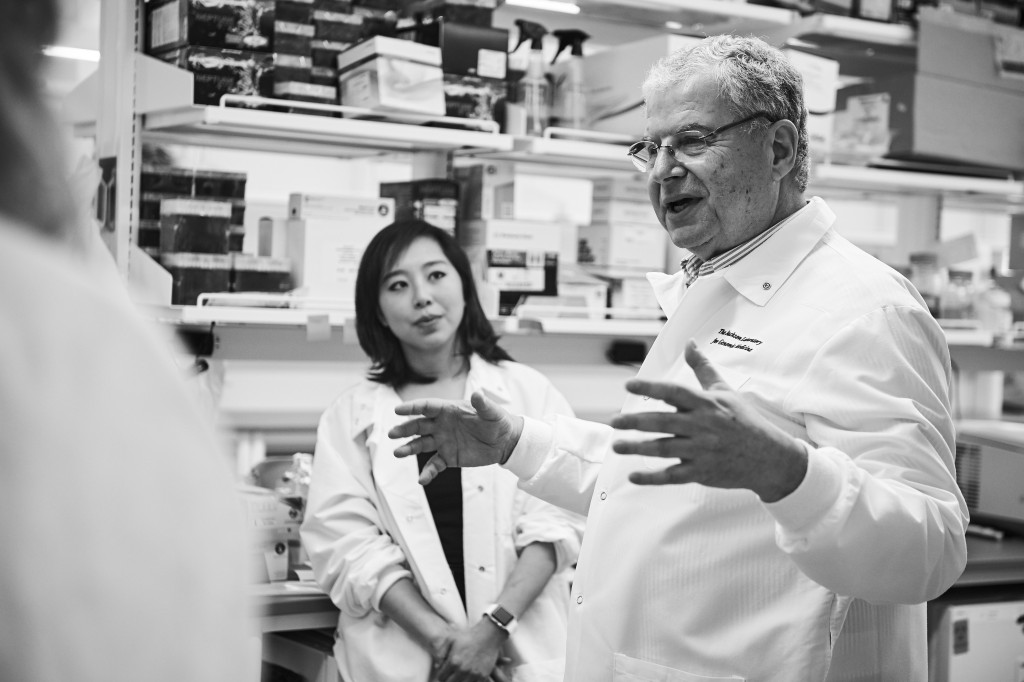
“You have in your gut this tremendous fermenter,” says microbiologist George Weinstock, Evnin family chair and director of microbial genetics at The Jackson Laboratory. “Full of species as diverse as a tropical rainforest.” And, much like a tropical rainforest, many of these organisms are obscure, unknown to science because their native habitat is hard to explore and the organisms hard to breed in a lab. Weinstock and fellow microbiome researcher Julia Oh have developed bioreactors at The Jackson Laboratory in Farmington that can grow these fragile organisms and reproduce entire artificial microbiotic communities.
They’ve been happy to partner with UConn Health gastroenterologist Dr. Tom Devers and nurse Lynn Baccaro. Devers and Baccaro have been treating patients with life-threatening gut infections since 2012 using fecal transplants. They take the bacteria-rich intestinal contents (otherwise known as poop) from a healthy person and put it in the colon of someone who’s sick with C. difficile, a terrible bacteria that ravages the gut. And 95 percent of the time, the person is cured within days.
“We see a broad spectrum of the Connecticut population. And we get interesting results: 70 percent of our patients catch this at home, not in a hospital,” Devers says. C. difficile used to be considered a hospital-acquired infection, so how are these people catching it at home?
Devers and Baccaro also want to know why their patients get healthy. What is it about the microbiome population of a healthy person that so quickly rescues the gut of someone suffering from C. difficile? And could they possibly make an extract of pure bacterial strains that a patient could swallow, instead of enduring a fecal transplant?
Weinstock and Oh think the answer to that last question is yes. They’ve developed a collection of four bacteria types that, when swallowed by a mouse with C. difficile, cure the mouse. Will it work in humans? Baccaro and Devers would like to do a study to find out.
“All the patients I tell about that get very excited about the possibility!” Devers says.

In addition to her work with Weinstock, Devers, and Baccaro, Oh has also started another UConn-JAX collaboration, this one with George Kuchel, director of the UConn Center on Aging. Together they will investigate how the skin and gut microbiomes correlate with health in the elderly. Kuchel, in turn, is working with JAX immunologist Jacques Banchereau to understand how the immune system alters as we age, and why some elderly are so healthy while others are so frail.
There are also collaborations that focus more on computational biology tools. For example, UConn mathematician and computational medicine specialist Paola Vera-Licona and JAX’s computational scientist Dugyu Ucar are working together on tools and software that can be used by scientists without a strong quantitative background. Their first tool applies network theory to Chromatin Interaction Analysis by Paired End-Tag sequencing, also known as ChIA-PET. Genomic scientists use ChiA-PET to track which regions of the genome interact with each other. Much like Ruan’s attempt to map the genome physically, ChIA-PET helps researchers map it functionally. But ChIA-PET can yield so much data it can be overwhelming. Vera-Licona and Ucar want to make it easy for researchers to find patterns in the data. Their first attempt is Quin, which was designed by a student of theirs at UConn; the tool can be found online at quin.jax.org.
Other collaborations between UConn and JAX researchers focus on everything from preemie baby microbiomes to single cell analysis of cancerous tumors. As the JAX faculty grows, the opportunities for collaboration will as well. And that should lead to new medical treatments and scientific discoveries, a worthy return on Connecticut’s investment.
